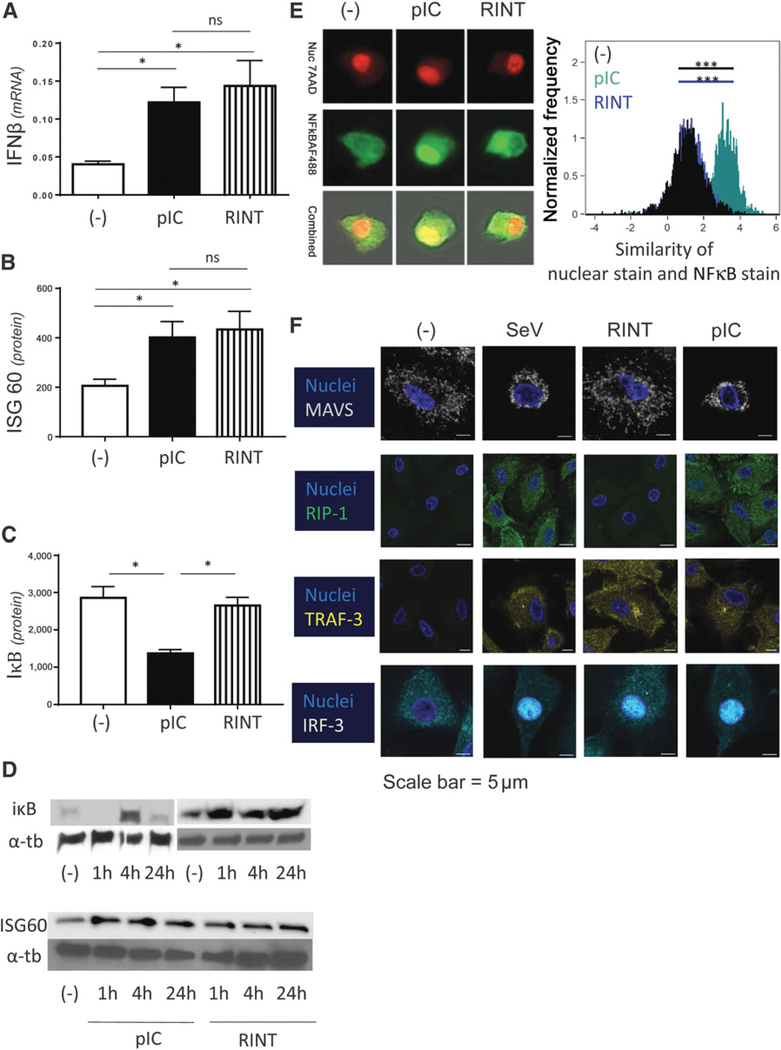Figure 2.
Poly-I:C and rintatolimod both activate the IFN pathway of dsRNA recognition, but only poly-I:C activates the helicase/MAVS- and RIPK-1–dependent pathways of dsRNA recognition and activates NFκB. A and B, Poly-I:C (pIC) and rintatolimod (RINT) promote similar induction of IFNβ and ISG60 in human macrophages. A. IFNβ mRNA levels (n = 4). B, Similar induction of ISG60 protein (n = 4). Results are presented as the mean values ± SEM of four Western blots measured by densitometry. C, IκB degradation is only visible by poly-I:C treatment (n = 3). IκB degradation measured after 1 hour treatment. Results are presented as the mean values ± SEM of three Western blots measured by densitometry. D, Representative Western blot results of ISG60 and IκB analysis; α-tubulin (a-tb) served as a positive control. E, Unique induction of NFκB nuclear translocation in response to poly-I:C, but not rintatolimod (Amnis image flow). Human macrophages were treated with poly-I:C or rintatolimod, as indicated. Nuclear translocation of NFκB (and cytoplasmic presence of NFκB) was evaluated after 30–40 minutes. Colocalization of nuclear stain and NFκB stain was analyzed using the similarity score. A high similarity score between nuclear stain and NFκB stain (high colocalization of both stains) is seen in the poly-I:C-treated group, whereas the untreated and rintatolimod-treated cells show low similarity scores (the nuclear stain and the NFκB stain do not overlap), demonstrating lack of nuclear NFκB translocation. F, Different patterns of activation of helicase- and TLR3-related signaling pathways by different forms of dsRNA. Human cultured macrophages were treated with rintatolimod or poly-I:C or were infected with SeV (80 HAU/ml) for 20 hours. Note the selective activation of MAVS (helicase-pathway) and RIP-1 (TLR3 adapter responsible for TLR3-dependent activation of NFκB) after treatment with poly-I:C and SeV but not rintatolimod. In contrast, TRAF3, TLR3-dependent activator of type-1 IFN pathway, is similarly activated by rintatolimod, poly-I:C, and SeV, but not in untreated cells. Similarly, nuclear translocation of IRF3, the type-1 IFN pathway-induced transcription factor, is observed after activation with poly-I:C, rintatolimod or SeV but not in the control cells (n = 3). Results are shown as mean ± SEM. *, P < 0.05 (Wilcoxon signed-rank test).

